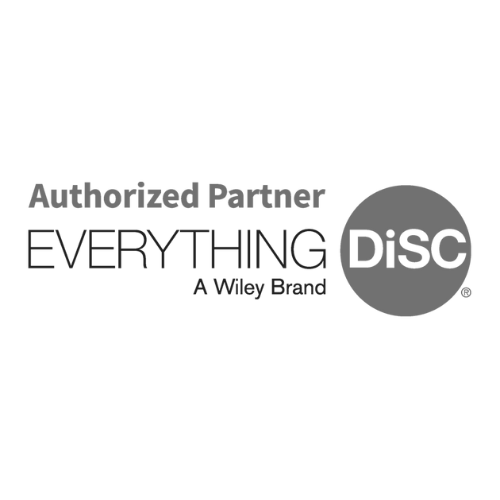You will continuously hear us say that employee engagement is what we are all about. But what exactly does it mean for your employees to be engaged? Does it mean that they are always in a good mood, whistling while they work, and skipping into work with a smile on their face from 8-5? There is a difference in being “happy” and being engaged. The article below does a great job at illustrating the difference between engagement verses employee satisfaction. For more information on how to increase employee engagement, contact us. We love to talk about this topic!
Here is the original article from AppreciationAtWork.com, written by Paul White. You can read the article below:
“Employee engagement differs from employee satisfaction. A Gallup poll found that only 32 percent of U.S. workers are engaged in their jobs, for instance. Yet employees who don’t love their jobs can and should still be engaged.
Custom Insight distinguishes employee engagement from employee satisfaction. Engagement is defined as “the extent to which employees feel passionate about their jobs, are committed to the organization, and put discretionary effort into their work.” Satisfaction relates to “love”—or how happy employees are.
The Purpose and Nature of Work
We must remind ourselves that the primary purpose of work is to provide for our needs—food, shelter, clothing. You have to survive to enjoy life, and meeting one’s physical needs precedes being emotionally and physically content.
Additionally, work, by definition, is providing goods and services that people need or want and are willing to pay for. By its very nature, work requires activity and effort that someone else needs someone to do (and to do it in the way that they want). When I coach individuals regarding career direction, we start with what is needed or wanted, not with what they want to do. Virtually everyone’s first job involves doing work that is needed, and it usually has some unpleasant component to it. In fact, I would propose that it is a privilege to enjoy one’s work.
4 Categories of Work Experience
Most employees will fit into one of these four categories when discussing the level of emotional investment in their job.
Hate. “I hate my job.” Some workplaces are clearly less desirable than others; hence, our research on toxic workplaces and what makes them so unhealthy. Sometimes we truly hate what we do or with whom we work. The work is hard and unrewarding and has little to do with your abilities or interests, and people are treated like dirt.
Even though a lot is written about people hating their work, clearly this doesn’t appear to be the majority of individuals in the workforce. Some initial research we have conducted shows that 18 percent of employees report that they work in a truly toxic or deadly work environment. Conversely, 23 percent indicate that they believe they work in an unhealthy workplace, and 59 percent believe their workplace is a normally stressful environment.
Endure. “I just work here because I have to.” Many times, we endure our job. We don’t like the work and we hope to move on to something better relatively soon. We can survive for a while, but the work clearly does not give us a sense of satisfaction or purpose. In fact, the work is draining and takes our energy away from pursuing other things we’d prefer to do.
Like. “Yeah, I generally like what I do—sometimes at least. There clearly are things that bug me, too.” In other words, this is not a bad place to be, and you sort of like the job, sometimes. Many people in their mid and late careers reach this experience. Work is still “work,” but they are able to use at least some of their skills and training, and provide a valuable service to others.
Love. “I love what I’m doing right now. I’m learning a lot and feel like I’m using ‘who I am’ to help others.” If this is where employees find themselves, they should be thankful, because many, many people never experience this in their lifetime.
How Should Businesses Respond?
We should not confuse “loving a job” (employee satisfaction) with employee engagement. Engagement, which has many positive benefits, is a result of a combination of factors, including involvement in decision-making, opportunity for job development, and sensing that supervisors are concerned about the well-being of employees.
Involvement in Decision Making. Communication is essential when a company is going through change (either big or small), and employees tend to be less resistant to change if they are part of the process. Valuing their opinions as decisions are made communicates respect, and encourages their engagement in future endeavors.
Opportunity for Job Development. People who are enduring their jobs, might only need a job that’s a better fit for them. There could be opportunities for development of new skills (or even expanding their job to use their existing skills) that would lead to higher job satisfaction.
Supervisor Support. I work with managers and supervisors regularly, training them to better support and encourage their employees. One key strategy is for managers to get to know their employees and appreciate them in ways that “hit the mark.”
For some, that means encouraging words. For others, it could be helping them with tasks or giving them a simple gift. When individual appreciation is shown regularly and authentically, employees feel valued and are more likely to engage.
Companies should be investing in helping employees be more engaged and satisfied with their jobs. However, the nature of work means that at times we won’t feel passionate about what we do. Still, the hope is that through implementing a healthy engagement plan, even those who don’t love their job will be engaged—committed to putting forth effort to meet the company’s goals.”





























